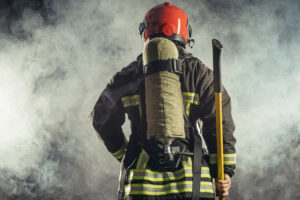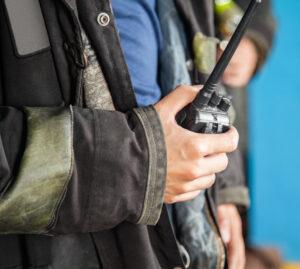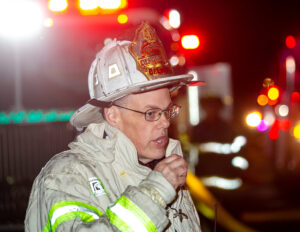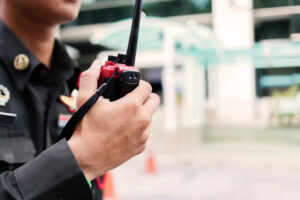Public Safety DAS: What Building Owners Need to Know
What is Public Safety DAS?
Public Safety DAS (Distributed Antenna System) is a public safety communication system that allows first responders to maintain wireless communication within buildings. Public Safety DAS is mandatory and is an important tool that ensures the safety of emergency responders, such as Firefighters, Police Officers and Emergency Medical Service Responders. Public Safety DAS works by utilizing a Bidirectional Amplifier (BDA) system in buildings that brings the wireless signal into structures from the outside. In emergency situations, such as natural disasters, fires and medical emergencies, first responders rely heavily on emergency radio systems to effectively respond. Public Safety DAS gives radio signals the ability to access areas in buildings such as elevators, stairwells, basements and parking garages, and ensures reliability and communication without interference.
Public Safety DAS Communication Systems Failure
During the September 11th attacks, first responders experienced a major failure of their radio systems. Many lost radio signals once they entered the upper floors of the World Trade Center and were unable to communicate with other first responders. In addition to suffering radio failure, the Fire Department and Police Department’s radio systems were incompatible and both departments were unable to exchange crucial information. There have been numerous other public safety communication failures in the years following the September 11th attacks and the implementation of Public Safety DAS ensures the interoperability between the different Agencies and guarantees that first responders have access to wireless communication in all areas of a building.
Who Has to Adhere to Public Safety DAS Requirements?
Many Cities and Counties in the United States have enacted ordinances that require buildings to meet a minimum standard for all public safety communication systems. Public Safety DAS applies to the following structures:
Office Buildings and High Rises
Hotels and Hospitality Venues
Airports and Train Stations
Stadiums and Arenas
Campuses and Malls
Parking Structures and Storage Facilities
Where and How Is Public Safety DAS Being Enforced?
The International Code Council (ICC) and the National Fire Protection Association (NFPA) set the model code requirements at the national level. Codes issued by the ICC and the NFPA include, the National Fire Code, the National Electrical Code (NEC), the International Fire Code (IFC) and the International Building Code (IBC). Cities and Counties have adopted their versions of the code requirements based off of codes issued by these entities.
Public Safety DAS is jurisdiction based, the code requirements governing your area is determined by the location of your building. Property owners must contact their local fire code official (AHJ-Authority Having Jurisdiction) to determine how Public Safety DAS is being enforced in their jurisdictions for their new and existing buildings. Communication systems must pass all code specifications, so having a clear understanding of the codes is crucial as they vary depending on the jurisdiction. The AHJ enforces Public Safety DAS code requirements and inspects properties and determines how NFPA and ICC standards and codes should be implemented. The AHJ can impose additional requirements and can make amendments to ensure the reliability of the public safety communication systems.
When Do Public Safety DAS Requirements Become Effective?
Public Safety DAS requires that Cities and Counties have their buildings’ public safety communication systems verified as compliant by 2022.
What are the Requirements for Public Safety DAS?
Most Counties and Cities develop their specific ordinances and codes for Public Safety DAS based off of codes issued by the NFPA, ICC, IFC or other entities as mentioned above. These ordinances must include:
A minimum signal strength
A specific frequency band or bands for public safety coverage
A specific level of reliability (power back up, water protection, cable protection)
Application of the limit over a percentage of each floor
Testing requirements and procedures, monitoring and maintenance standards
Provisions for waivers of the requirements
Provisions for penalties
Public Safety DAS Requirements Specified by NFPA and IFC (Summary)
Public Safety DAS ensures that first responders have a reliable public safety communication system in order to effectively respond to emergency situations. First responders must be able to communicate instantly, without interference and must be able to transmit and receive sensitive information securely.
Public Safety DAS Wireless Coverage Requirements
The NFPA dictates that areas deemed as critical or of “vital importance”, requires 99% coverage. Areas such as fire command centers, the fire pump room, sprinkler valve locations, exit stairs, exit passageways, elevator lobbies or any other areas as specified by the AHJ. In all other areas, the NFPA requires 90% coverage.
Public Safety DAS Minimum Signal Strength Requirement
The minimum signal strength must be sufficient to provide voice communication throughout the coverage area. Inbound and outbound signal strength set by the IFC and the NFPA require a minimum signal strength of -95 dBm for adequate coverage.
Public Safety DAS Battery Backup Requirement
Maintaining power is an essential part of ensuring that public safety communication systems are always operable, therefore a secondary power source is required. The IFC requires that emergency radio coverage systems (public safety communication systems) be provided with dedicated standby batteries or provided with 2-hour standby batteries and connected to the facilities generator power system. The standby power supply shall be capable of operating the emergency radio coverage system at 100% capacity for a minimum of 12 hours.
Radio Equipment Enclosures Requirement
It is very important that sensitive equipment is protected from water damage and is able to function properly. The IFC and NFPA stipulates that all equipment supporting the public safety network must be contained in NEMA-4 compliant enclosures. The National Electrical Manufacturer Association (NEMA) requires that all communication equipment be contained in a 4-type waterproof cabinet.
Antenna Isolation Requirement
Public Safety Communication Systems must operate without interference, therefore the NFPA and the IFC dictates that antenna isolation must be 20 dB or higher than the gain under all operating conditions.
Public Safety DAS Testing Requirements
It is the building owner’s responsibility to have their public safety communication systems inspected and tested annually. Testing and inspection is also required when there are structural changes, including additions or remodels that could significantly change the original field performance test. Buildings must be tested by a certified Public Safety DAS professional and property owners must ensure that buildings meet all the required standards.
Public Safety DAS and Florida Fire Prevention Code
Counties and Cities in Florida are required to adhere to the Florida Prevention Code, which is based on codes issued by the NFPA and the ICC. The Florida Fire Prevention Code specifies that the local fire code official (AHJ) shall determine the minimum radio signal strength for fire department communications in all new and existing high-rise buildings. The Florida Prevention Code also sets the date for compliance by which properties have to adhere to the statues.
By January 1st, 2022, existing high-rise buildings are required to comply with the minimum radio strength for fire department communications and two-way radio systems enhancement communications (Public Safety DAS).
By December 31st, 2019, any existing building that is over 75 feet in height, that is not currently in compliance with the requirements must apply for an appropriate local permit for the required installation and must demonstrate that buildings will become compliant by 2022.
What Steps Should Florida Building Owners Take?
1. Contact your local fire code official (AHJ) to determine how this requirement is being enforced in your jurisdiction.
2. Arrange with an appropriate provider to measure the current signal strength in your building to determine what it will take to comply.
3. Although the deadline for full implementation may not have arrived, some jurisdictions may require full implementation to improve the signal strength prior to closing out a current permit or certificate of occupancy. This may be triggered if there is significant renovation to the building or for large floor renovations.
4. If your jurisdiction requires an improved signal, prepare a plan to meet the deadline.




